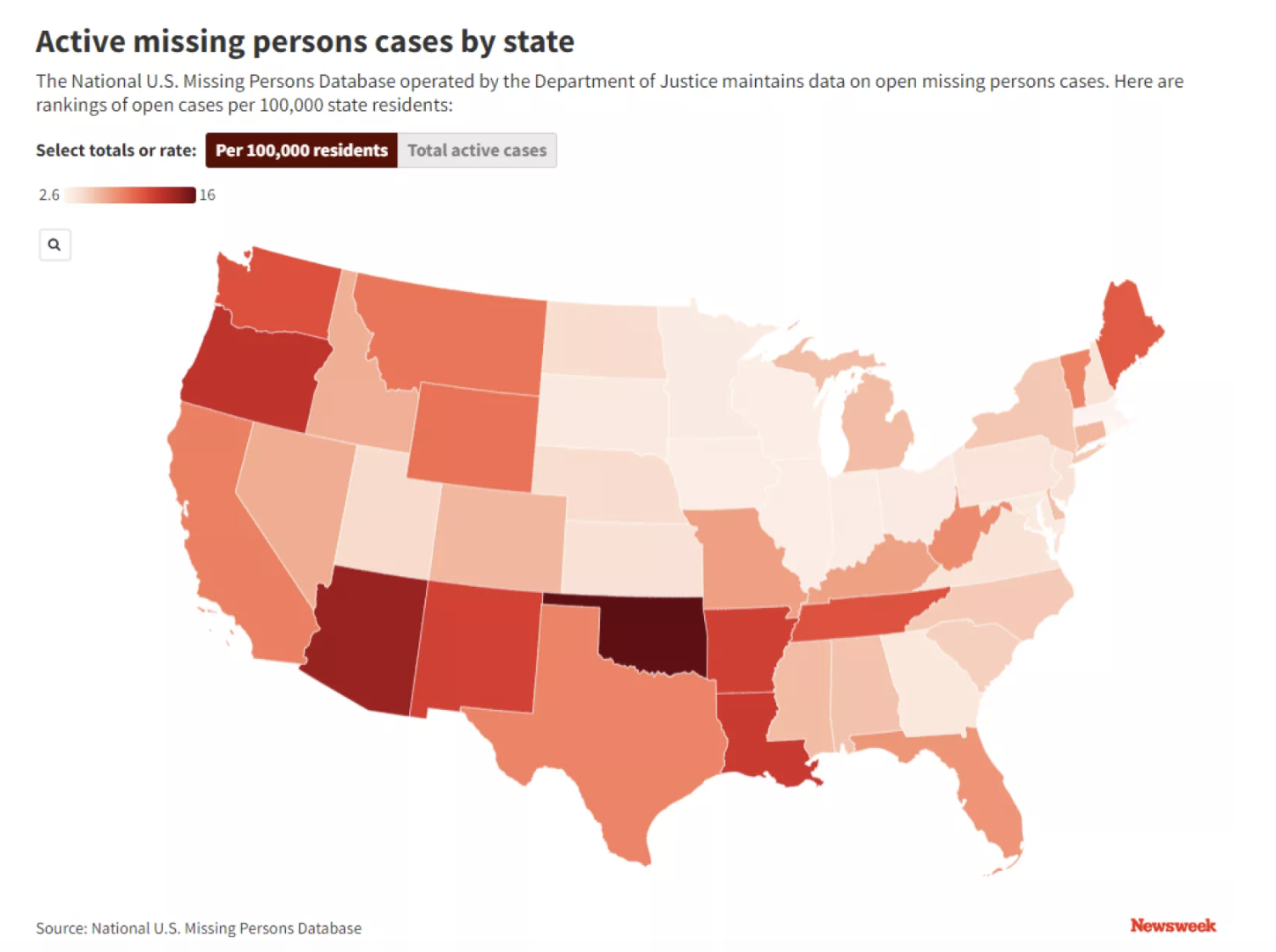
Defund Death.
Fund Justice.
The death penalty drains millions of dollars from communities that urgently need resources to support victims of crime, solve cold cases, and locate missing persons.
Demand funds be reallocated away from expensive and ineffective responses to violence that divert crucial funds away from achieving justice and closure for families.
Missing People and unsolved Cold Cases are an urgent issue in Arizona
Arizona has the 2nd highest missing person rate in the country just behind Oklahoma. With support for victims and survivors of crime lacking, more resources are vitally needed. Rural and tribal agencies urgently need funding to prevent violence, solve cases, and locate missing individuals.
Even in the largest populated city, there are serious concerns about staffing and resources for victims. The Phoenix Police Department’s cold case homicide unit runs with just three people and has confirmed there are thousands of unsolved homicide cold cases. The unit’s staff is less than half what it was more than a decade ago.
Some existing cold case units are staffed by volunteers. In Yavapai, the County Sheriff’s Office six cold case volunteers who work in a partner capacity with detectives.
Some county agencies have no units for cold cases or missing people. Without sustainable funding, these units are not likely to develop. Indigenous communities are deeply impacted by the lack of recorded data, staffing, and resources to locate loved ones and solve homicide cases. Many cases have gone underreported.
Data from the Murder Accountability Project shows that since 2018 the clearance rate of homicides in Arizona is 58.24%. Clearance statistics measure the proportion of reported crimes that were resolved by an arrest or other, exceptional means (e.g., death of the offender, unwillingness of the victim to cooperate). A single arrest may result in many clearances.
Wasted Resources
The cost of just one death penalty trial could sustain multiple cold case units in rural and tribal communities for years. The cost for legal defense for a single death penalty case with a death sentence outcome is estimated at $1,066,187. High-profile cases can cost three to four times that.
As of May 2024, there are currently 112 individuals sentenced to death and living on death row in Arizona, with a low-end estimated cost to taxpayers of $119,412,944. This estimate does not include the costs associated with the appeals process that can span decades for each case, experts called to exam cases, and time investments from state prosecutors. The majority of death row prisoners will pass away from natural causes, not executions.
Data from the Murder Accountability Project shows the average clearance rate of homicides since 2018 in Arizona is 58.24%. Clearance statistics measure the proportion of reported crimes that were resolved by an arrest or other, exceptional means (e.g., death of the offender, unwillingness of the victim to cooperate). A single arrest may result in many clearances.
Cold Case Financial Facts
Navajo, Apache, and Pinal Counties lack dedicated Cold Case or Missing Persons units.
The annual costs to establish these units are as follows:
Navajo County: $140,000
Apache County: $85,133
Pinal County: $585,397
Consider this: While Gila County and Apache County are similar in size, the police budget for Gila County is a mere $248,741, with no victim services, while Apache County receives $9,476,290.
It's time to prioritize resources where they're needed most: supporting victims, solving cases, and strengthening community safety.
Arizona has over 2,085 unidentified person cases and 1,064 Active Missing Person cases.
The current number above was resourced from NamUs on May 3, 2024. NamUs is the national database managing data for The National Missing and Unidentified Persons System is a centralized repository and resource center for missing, unidentified, and unclaimed person cases across the United States.
NamUs helps investigators match long-term missing persons with unidentified remains to resolve cases and bring resolution to families.
Demand Change
Over the last year Death Penalty Alternatives for Arizona has conducted extensive research, conducted meetings with law enforcement agencies, met with legislators, distributed policy recommendations to lawmakers, and built relationships with survivors of crime and families impacted by acts of violence.
We’ve helped advocate for divestment from the death penalty and the reallocation of financial resources to families impacted by violence.
Read our Policy Memos to Lawmakers
DPAA Interns meet with legislators in Spring 2024. Photos above include meetings with Representative Analise Ortiz and Senator Flavio Bravo.
Join us as we advocate for financial and resources for agencies that support victims of crime. Sign the petition and let members of the legislature know ineffective responses to violence are not the solution. One unsolved homicide is too many.
Information Sources:
https://www.newsweek.com/missing-people-namus-missing-persons-database-department-justice-oklahoma-1866246
Resolution No. 23-07-01 Board of Supervisors of Gila County Authorizing Adoption of Fiscal Year 2023-2024 Budget for Gila County: https://cms3.revize.com/revize/gilaaz/Corrected%20Budget%20Upload.pdf
Apache County Adopted Budget Fiscal Year 2022-2023: https://www.apachecountyaz.gov/accnt_591117/site_591118/Documents/2023-GFOA-Budget.pdf
https://namus.nij.ojp.gov/
https://www.azfamily.com/2024/01/24/phoenix-pds-cold-case-homicide-unit-severely-understaffed-3-people-working-3000-cases/
https://cronkitenews.azpbs.org/2023/05/15/arizona-missing-and-murdered-indigenous-people-task-force/
https://ojjdp.ojp.gov/sites/g/files/xyckuh176/files/jjbulletin/9812_2/stats2.html#:~:text=Clearance%20statistics%20measurethe%
20proportion%20of,may%20result%20in%20many%20clearances.https://cronkitenews.azpbs.org/2023/05/15/arizona-missing-and-murdered-indigenous-people-task-force/






